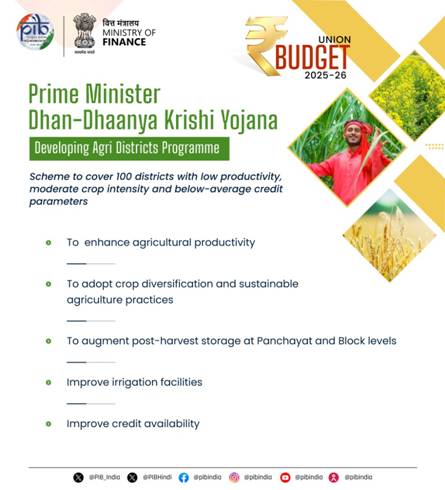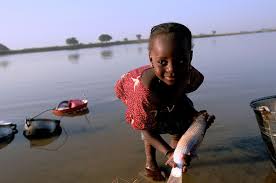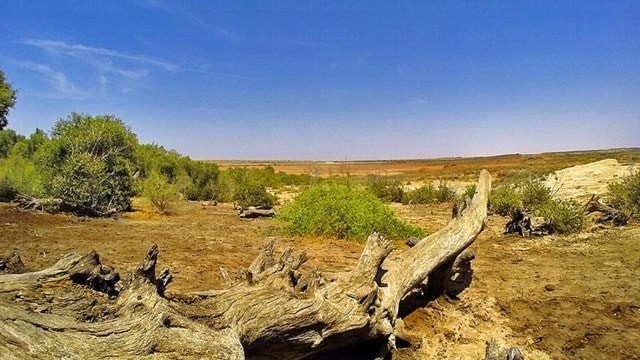National Geospatial Mission
- 03 Feb 2025
In News:
Finance Minister Nirmala Sitharaman announced the launch of a National Geospatial Mission in the Budget 2025-26.
Key Highlights:
Objective: To modernize land records, enhance urban planning, and create a robust geospatial infrastructure to support India’s broader development goals, including sustainable growth, efficient governance, and improved public service delivery.
Key Features of the Mission:
- Modernization of Land Records:
- Digitization and updation of land records using geospatial technology.
- Aim to reduce land disputes and promote efficient and transparent land use.
- Urban and Infrastructure Planning:
- Provides high-resolution geospatial data for informed urban planning.
- Supports better design and execution of infrastructure through integration with the PM Gati Shakti framework.
- Development of National Geospatial Data Infrastructure (NGDI):
- Integrates geospatial data from multiple departments and ministries.
- Enables seamless access and interoperability for users across sectors.
- Open Geospatial Data Policy:
- Encourages private sector participation by allowing access to non-sensitive, high-resolution data.
- Reduces reliance on foreign geospatial data providers.
- Sectoral Impact:
- Agriculture: Precision farming, resource mapping, and yield optimization.
- Disaster Management: Enhances early warning systems and response planning.
- Environmental Monitoring: Facilitates conservation, deforestation tracking, and ecosystem health analysis.
- Transportation: Improves logistics, routing, and infrastructure placement.
- Climate Monitoring: Aids in data-driven climate action and adaptation planning.
- Technological Integration:
- Utilizes emerging technologies such as AI, drones, and quantum computing for spatial data collection and analysis.
- Promotes research and development in geospatial science to drive innovation.
- Support to Private Sector:
- Anticipated growth in demand for services from geospatial startups, drone companies, and mapping enterprises.
- Strengthens India’s indigenous geospatial capability aligned with the booming global geospatial market (projected to reach $1,064 million by 2030).
Significance and Alignment with National Goals:
- Enhances transparency and efficiency in land governance.
- Contributes to sustainable urban development.
- Aligns with Digital India and Atmanirbhar Bharat by reducing data dependency on foreign sources.
- Acts as a foundational enabler for India’s development agenda, particularly in areas of resource management, climate resilience, and national security.
PM Dhan Dhanya Krishi Yojana

- 03 Feb 2025
In News:
- Recently, the Union Government has introduced the PM Dhan Dhanya Krishi Yojana which aims at enhancing agricultural productivity.
- Objective: To boost agricultural productivity, modernize farming practices, and enhance rural prosperity by addressing region-specific challenges in backward agricultural districts.
Key Features:
- Integrated Approach:
- Consolidates multiple existing agricultural schemes under one umbrella for greater synergy and implementation efficiency.
- Draws inspiration from the Aspirational Districts Programme, which has improved socio-economic outcomes in backward regions.
- District-Specific Interventions:
- Focuses on districts with:
- Low crop productivity
- Moderate crop intensity
- Limited institutional credit access
- Implements customized strategies based on the unique challenges of each region.
- Focuses on districts with:
- Core Focus Areas:
- Enhancing farm productivity through modern technology.
- Improving irrigation infrastructure.
- Increasing formal credit availability to reduce dependence on informal moneylenders.
- Promoting crop diversification and sustainable agriculture.
- Strengthening post-harvest infrastructure like storage at Panchayat and block levels.
- Technology-Driven Solutions:
- Encourages adoption of climate-resilient and precision farming.
- Supports digital access to credit and advisory services.
- Financial Inclusion:
- Strengthens linkages with government financial programs, microfinance institutions, and banks.
- Aims to reduce rural indebtedness and promote formal financial participation.
- State and Centre Collaboration: Implementation will involve both central and state governments, ensuring localized solutions with national support.
- Reducing Distress Migration: By improving rural livelihoods and opportunities, the scheme aims to make migration a choice rather than a compulsion.
Onchocerciasis

- 03 Feb 2025
In News:
The World Health Organization (WHO) officially verified Niger as the first country in the African Region and the fifth globally to eliminate onchocerciasis (river blindness) by interrupting the transmission of the parasite Onchocerca volvulus.
What is Onchocerciasis (River Blindness)?
- A parasitic disease caused by the worm Onchocerca volvulus.
- Transmitted by infective blackflies, primarily found in riverine areas.
- Causes severe itching, disfiguring skin conditions, and irreversible blindness.
- It is the second leading infectious cause of blindness globally (after trachoma).
- Predominantly affects rural populations in sub-Saharan Africa, Yemen, and parts of Latin America.
Niger’s Elimination Strategy and Achievements:
Historical Background:
- 1976–1989: Under the WHO Onchocerciasis Control Programme (OCP), Niger used vector control via insecticide spraying, reducing disease transmission.
- 2008–2019: Mass Drug Administration (MDA) with ivermectin and albendazole was carried out, primarily for lymphatic filariasis (LF), but also effectively interrupted onchocerciasis transmission in co-endemic areas.
Assessment and Surveillance:
- 2014: Niger began preliminary assessments following the end of LF MDA.
- Entomological and epidemiological surveys confirmed disease elimination:
- Prevalence dropped from 60% to 0.02%.
- No ongoing transmission of O. volvulus.
Key Contributors to Success:
- Partnerships: Collaborative efforts between the Government of Niger, WHO, Merck Sharpe & Dohme (MSD), and various NGOs.
- Medicine Donation: MSD’s donation of ivermectin.
- Surveillance & Flexibility: Continuous monitoring allowed strategic adaptation.
- Previous Success: Niger was certified free of Guinea-worm disease in 2013.
Global and Regional Significance:
- Niger becomes the fifth country globally to eliminate onchocerciasis:
- Other four countries:
- Colombia (2013)
- Ecuador (2014)
- Mexico (2015)
- Guatemala (2016) (All from the WHO Region of the Americas)
- Other four countries:
- WHO African Region:
- 21 countries have eliminated at least one Neglected Tropical Disease (NTD).
- Onchocerciasis is the second NTD eliminated in Niger after Guinea-worm.
Guneri Inland Mangrove

- 03 Feb 2025
In News:
In 2024, the Gujarat government declared the Inland Mangrove of Guneri, located in Kutch district, as the first Biodiversity Heritage Site (BHS) of the state under the Biological Diversity Act, 2002. The declaration followed a recommendation by the Gujarat Biodiversity Board.
Key Features of Guneri Inland Mangroves:
- Location: Guneri village, Lakhtar tehsil, Kutch district, Gujarat.
- Area: 32.78 hectares.
- Distance from Sea: ~45 km from the Arabian Sea; ~4 km from Kori Creek.
- Nature: Inland (non-coastal) mangrove ecosystem — one of only eight such sites globally and the last remaining in India.
- Terrain: Flat land resembling a forest; no tidal influence or sludge typically seen in coastal mangroves.
- Water Source: Sustained by groundwater retained in limestone deposits; no direct contact with seawater.
Ecological and Geological Significance:
- Possibly originated from:
- Miocene marine transgression, or
- Along the ancient Saraswati River, believed to have flowed in the Great Rann of Kutch around 3000–4000 BCE.
- Limestone formations in western Kutch provide continuous subsurface water flow, enabling survival of this unique mangrove system.
Biodiversity:
- Habitat to:
- 20 migratory bird species
- 25 resident migratory avifaunal species
- Acts as a vital ecosystem for local and seasonal wildlife.
Mangroves in India – 2024 Snapshot:
- As per the “Red List of Mangrove Ecosystems” (May 22, 2024):
- India has 3% of South Asia’s mangrove cover.
- Total mangrove area: 4,975 sq km (0.15% of India's land area).
- Increase: 54 sq km (1.10%) since last assessment.
- State-wise share:
- West Bengal: 42.45% (notably South 24 Parganas & Sundarbans)
- Gujarat: 23.66% (with highest increase: 37 sq km)
- Andaman & Nicobar Islands: 12.39%
Legal Framework:
- Declared under the Biological Diversity Act, 2002, which empowers state governments to notify BHS after consulting local self-government bodies.
- A local Biodiversity Management Committee (BMC), including representatives from self-governance institutions, will oversee protection and conservation.
- This provides a formal structure for site management, previously absent.
Conservation Measures:
- Training programs for local and tribal communities along with forest officials.
- A management plan will be implemented to preserve the unique flora and fauna.
National Bank for Financing Infrastructure and Development (NaBFID)

- 03 Feb 2025
In News:
In the Union Budget 2025, Finance Minister Nirmala Sitharaman announced that the National Bank for Financing Infrastructure and Development (NaBFID) will set up a partial credit enhancement facility to promote corporate bond issuance in the infrastructure sector.
Need for Credit Enhancement:
- Pension and insurance funds in India, as per regulatory norms, can invest only in AA-rated or higher securities.
- Most infrastructure firms issue bonds rated below this threshold (often "A" rated).
- Partial credit enhancement will elevate such bonds to AA ratings, enabling large-scale participation from long-term institutional investors.
Significance:
- Currently, pension and insurance funds prefer government bonds. However, with the government's ongoing fiscal consolidation, sovereign bond issuance is expected to decline.
- This measure provides alternative, long-term investment avenues for these funds.
- Enhances liquidity in the corporate bond market, especially for infrastructure players.
- Helps in reducing infrastructure companies' dependence on banks for funding.
About NaBFID:
- Established: 2021 under The National Bank for Financing Infrastructure and Development Act, 2021.
- Type: Development Finance Institution (DFI).
- Regulator: Reserve Bank of India (RBI) as an All-India Financial Institution (AIFI).
- Purpose: Bridge gaps in long-term, non-recourse infrastructure financing and promote bond and derivatives markets in India.
Development Finance Institutions (DFIs):
- Government-owned or public sector-backed institutions that finance large-scale, long-gestation projects.
- Provide medium (1–5 years) and long-term (>5 years) financing.
- Raise funds via sovereign borrowings, insurance companies, pension funds, and sovereign wealth funds.
- Offer both financial support (loans, guarantees) and technical support (project viability, consultancy).
- Do not accept public deposits.
Benefits of Partial Credit Enhancement:
- Democratizes access to the corporate bond market for sub-AA-rated firms.
- Attracts long-term capital into infrastructure through safer, credit-enhanced instruments.
- Promotes diversification and deepening of India's debt markets.
- Makes infrastructure financing more cost-efficient and sustainable over the long term.
Challenges Ahead:
- Regulatory streamlining is essential.
- Guarantee fees need optimization to ensure cost competitiveness against traditional bank lending.
